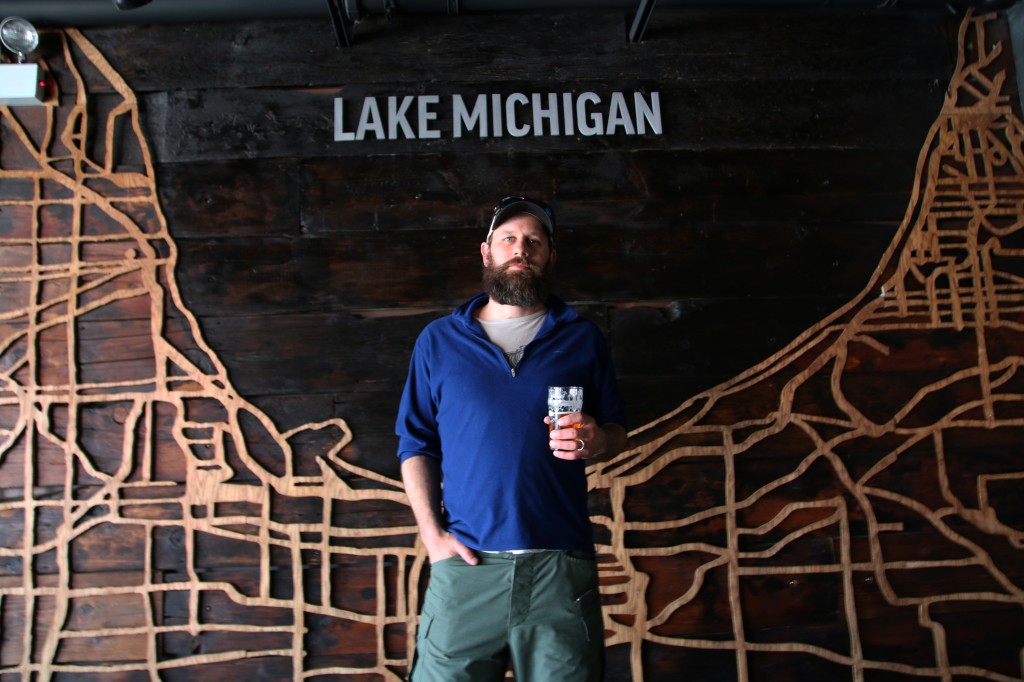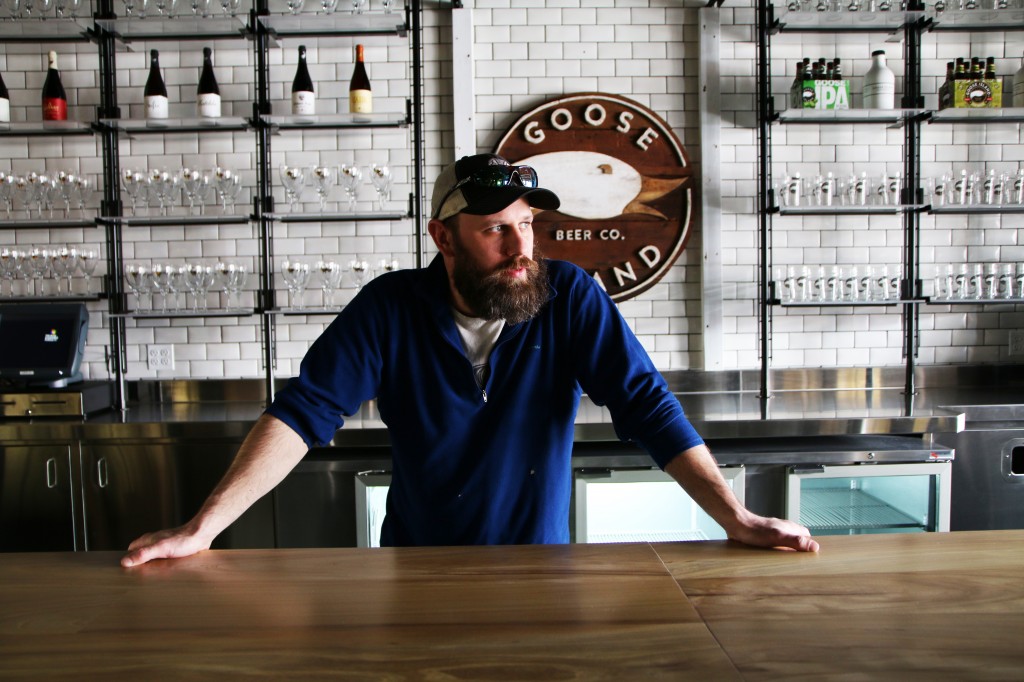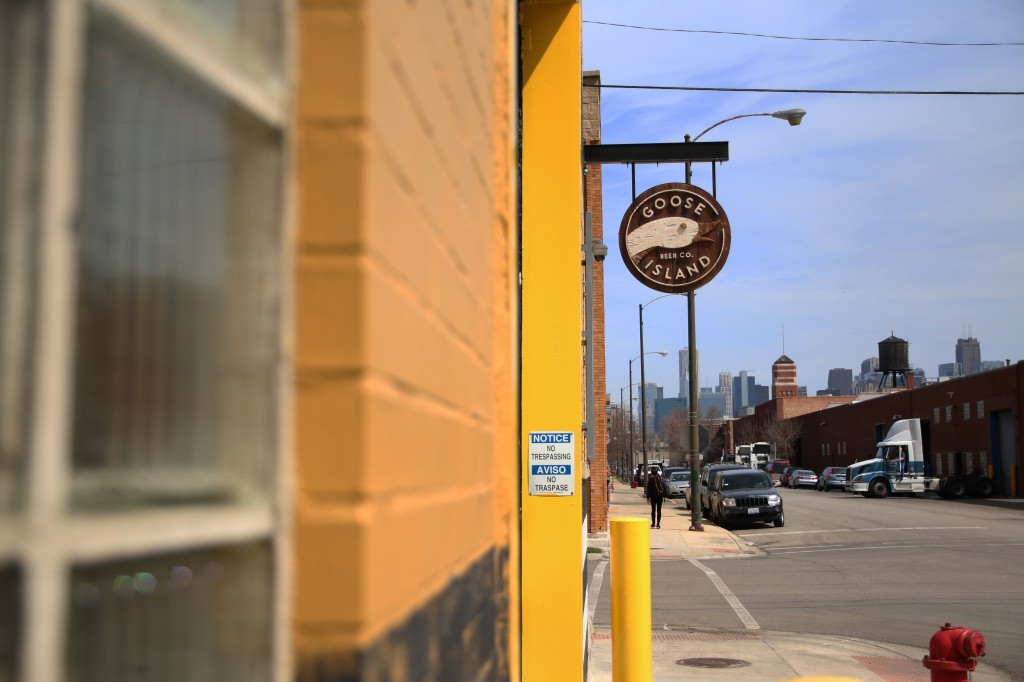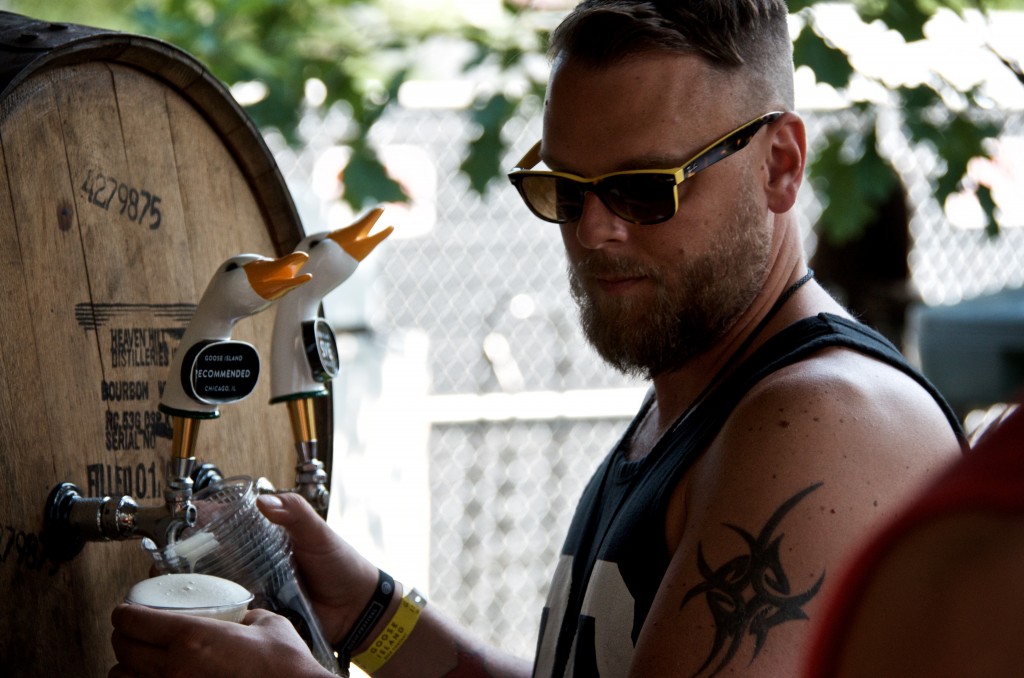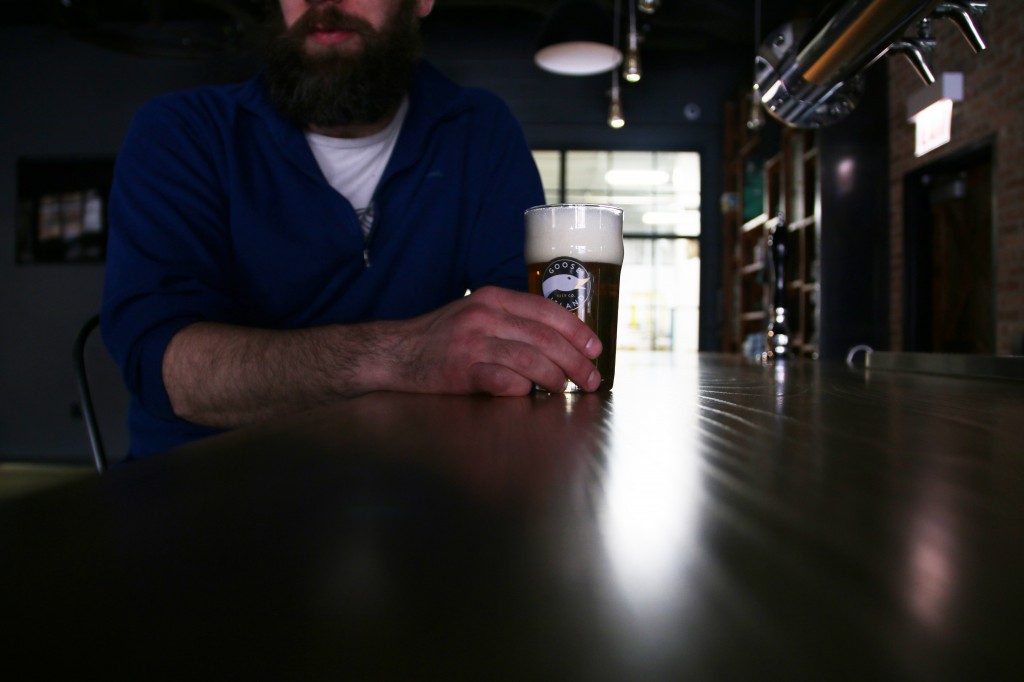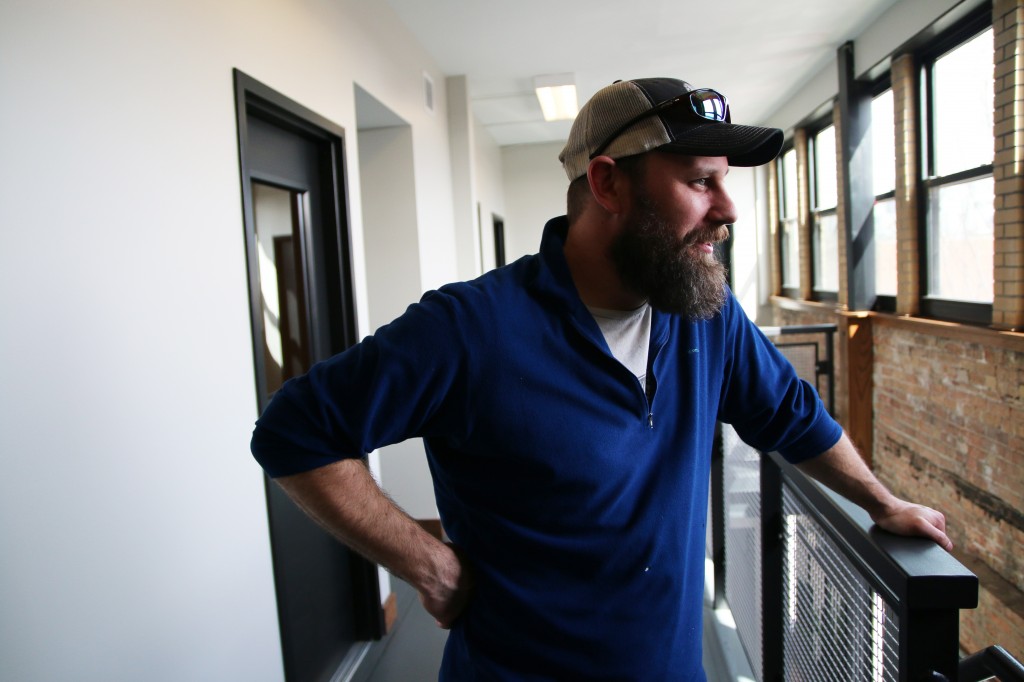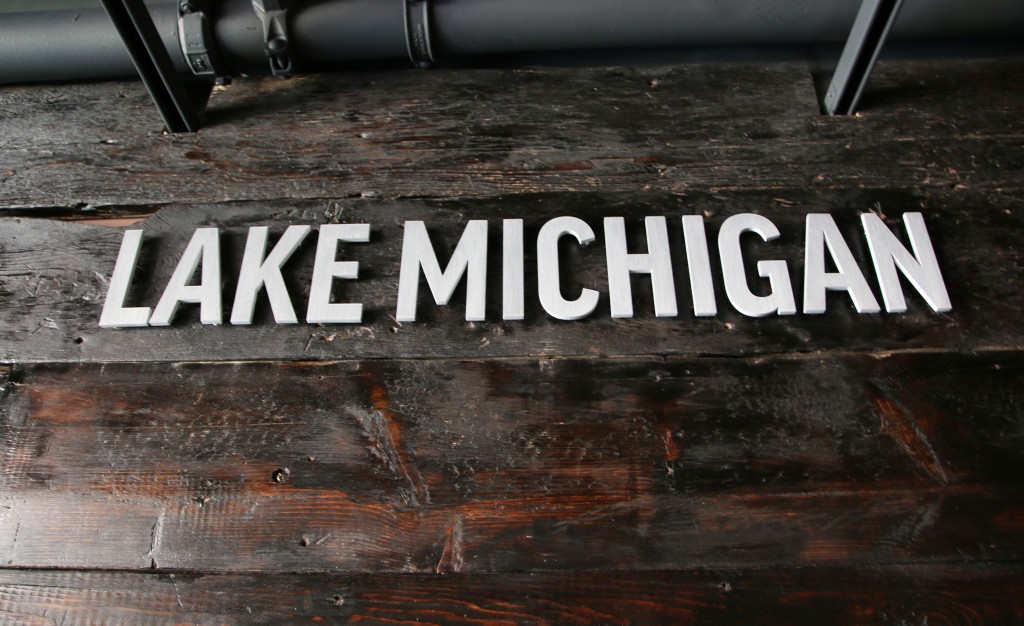Goose Island Beer Co. is known for its innovation. Whether it’s barrel aging, the Fulton & Wood series, or the use of experimental hops – the brewers at Goose have been known for pushing the definition of what it means to be Goose Island. The latest chapter in that evolution is Blue Line Pils.
Blue Line Pils is a Pilsner that has its roots in another Goose Island beer, a collaboration with Pitchfork Music Festival called Recommended. Pitchfork fans may remember Recommended as the beer that used water from the Schiller Park Fountain of Youth – a fountain that local legend says has magical healing properties. The goal was to make something that the brewers could enjoy all day, but that still had the complexity and balance they were used to drinking. It was such a hit amongst the Goose Island team that they began plotting their next lager beer and eventually, two years later, Blue Line Pils was born.
To learn more about the beer and its Chicago ties, I sat down with Goose Island Brewmaster Jared Jankoski at the new Fulton & Wood taproom.
Evolution of a Brewer: Jared’s Journey to Goose Island
Lakeshore Beverage: What originally sparked your passion for craft beer?
Jared Jankoski: There’s a big grocery store chain in Wisconsin where I grew up that has a liquor store attached to it and even before craft was really slamming – this was maybe 1990 – they had German imports, early Wisconsin crafts and one offs from Pete’s Wicked, Sam Adams, Sierra Nevada and oddball things like Lion Stout from Africa. The beers stirred a real curiosity in me because they came from all over the country – from all over the world. You could do a lot of different things to experience the world and beer was one of those things for me.
LSB: How did that early passion transform into a desire to make beer?
JJ: When I was a senior in High School, my parents let me start homebrewing… and at the same time I had this High School chemistry teacher that was just amazing. I wasn’t a high achieving student that was heading off to graduate school to do research or anything but this guy was the kind of teacher that could inspire you and get the most out of you. I got an A in that AP class and found out that I really understood that well. I went on to study chemistry in college and continued to homebrew but when I graduated I was considering pursuing a career in teaching. I mean, I’d known since I was younger that I wanted to brew beer for a living but I didn’t know if that was a viable career. I decided to go with my gut and kept homebrewing while working a bunch of non-career jobs. I sold my sweet ‘65 VW bus and used the money to pay for brewing school. When I finished a buddy told me about a newspaper ad for a job at New Glarus and eventually I made it here. I love being at Goose Island because we work in such a team-centric way. It’s really open and inclusive of everybody that works here and we’re able to share and learn from each other and come up with beers that we’re all really proud of.
The Blue Line Pils Origin Story: From Pitchfork to Pint Glass
LSB: What was the impetus for Blue Line? What inspired Goose Island to brew a pilsner?
JJ: We’ve wanted to do a lager beer for a long time but we haven’t really had space in our lineup to make one – lagers take a longer time. When the Pitchfork collaboration came along, we had the opportunity to use some of the space in the brewery to make a lager inspired by Pitchfork, so we selfishly made a beer we could drink at a festival we enjoyed. Blue Line has its roots in Recommended but takes it to a different place: it’s dryer, more drinkable and features some brand new hops.
Blue Line has its roots in Recommended but takes it to a different place: it’s dryer, more drinkable and features some brand new hops.
LSB: What’s so exciting about the idea of a craft pilsner?
JJ: For me it’s the combination of the easy-drinking yet still complex aspects of these beers that makes them really fun to drink while remaining approachable. You can get a nice complex beer that you can really wrap your palate around and at the same time you can experience a lot of the subtlety that goes into it. It’s going to be light and refreshing, and still have these craft beer characters, that complexity and balance.
We’ve really been chomping at the bit to get this thing together and out the door. Brewers love lager beer. I always have and all my brewer friends throughout the country agree – there’s just something about lager beers. Our craft lager options are a bit limited in the States so we’re making this beer our way that we love to really showcase the qualities of lager.
Experimental Hops and the Challenges of Brewing a Craft Lager
LSB: What sets Blue Line apart from other lagers?
Blue Line has its roots firmly in pilsner tradition but it also blends itself nicely with the contemporary hopping. I think it’s well balanced between drinkability and hop character. I’m not trying to over-simplify things but any beer that’s well balanced is going to be a good beer. That’s at the center of the brewer’s art.
I’m not trying to over-simplify things but any beer that’s well balanced is going to be a good beer. That’s at the center of the brewer’s art.
Also, the use of both traditional and experimental hops gives it a unique character.
LSB: What were the experimental hops?
JJ: Equinox and Meridian. They were experimental hops that have now been vetted and are commercially available. We use some traditional hops in the kettle like Mt. Hood and when that’s combined with these modern hops you get a really nice balance of those traditional characters with what you might describe as fruity, citrusy or berry-like.
The Meridian hop is really unique — it’s a great accentuating hop. In my opinion, there are only a handful of hops that make a really great single-hop beer: I think the beauty of hops is that it’s like colors on your palate in beer. Meridian has some citrus notes to it, it’s got really unique red fruit berry notes to it – blackberry, raspberry all mixed together. I love it. It’s jammy and has light tropical notes and light citrus notes to it. The Equinox hops have got some of those similar attributes – some tropical notes for sure. It just works so well with Meridian.
LSB: What are some of the challenges of brewing a lager?
JJ: There are many. The yeasts can be a little more finicky. They’re cooler temperatures so they don’t rocket off in terms of fermentation and metabolism like ale yeasts do. They can produce excessive amounts of sulfur which sometimes can be hard to age through. There’s the time piece… lagers just take so much longer. It can also be a challenge because if you’re not brewing lagers regularly you can struggle with yeast management and therefore end up with a fermentation that might take a little longer and you’re already looking at a long cold-aging too so that can be problematic. There’s also something to be said in that there’s nothing to hide behind in these beers. You really need to cross your i’s and dot your t’s.
There’s also something to be said in that there’s nothing to hide behind in these beers. You really need to cross your i’s and dot your t’s.
The Magical Water of Lake Michigan
LSB: The beer you brew here is made with water from Lake Michigan. What makes that water so well suited for brewing?
JJ: The water that comes from Lake Michigan is excellent brewing water. We hardly do anything to it. All we do is carbon filter it just to take out the minute amounts of chlorine that the city puts in there. It’s great because it’s naturally soft and it mimics some of the water characteristics that are used in making German lagers. You don’t normally find that. Normally water is too hard or it has too many contaminates in it that aren’t good for brewing. We just take Lake Michigan water that comes into our facility and use it in the beer. It’s great. Every brewer in Chicago is loving the fact that they have good water. It’s absolutely critical and it’s a real luxury.
We just take Lake Michigan water that comes into our facility and use it in the beer. It’s great. Every brewer in Chicago is loving the fact that they have good water. It’s absolutely critical and it’s a real luxury.
LSB: After going into all the detail, let’s take a step back: what is Blue Line? If you were to sit down with someone at a bar and explain the beer, what would you say?
JJ: I’d tell them that Blue Line is simply an American craft pilsner. It’s brewed from the fantastic water from Lake Michigan and, at the end of the day I think it’s a great beer: it’s drinkable and well-balanced and the contemporary hops give it a real interesting character.
At the end of the day being able to make Blue Line is a real luxury for us. It stays true to what we want to do – to make the best beers that we can and to make the beers that we like to drink. We’re really excited to finally share this with Chicago.
At the end of the day being able to make Blue Line is a real luxury for us. It stays true to what we want to do – to make the best beers that we can and to make the beers that we like to drink. We’re really excited to finally share this with Chicago.
// Matt Tanaka


